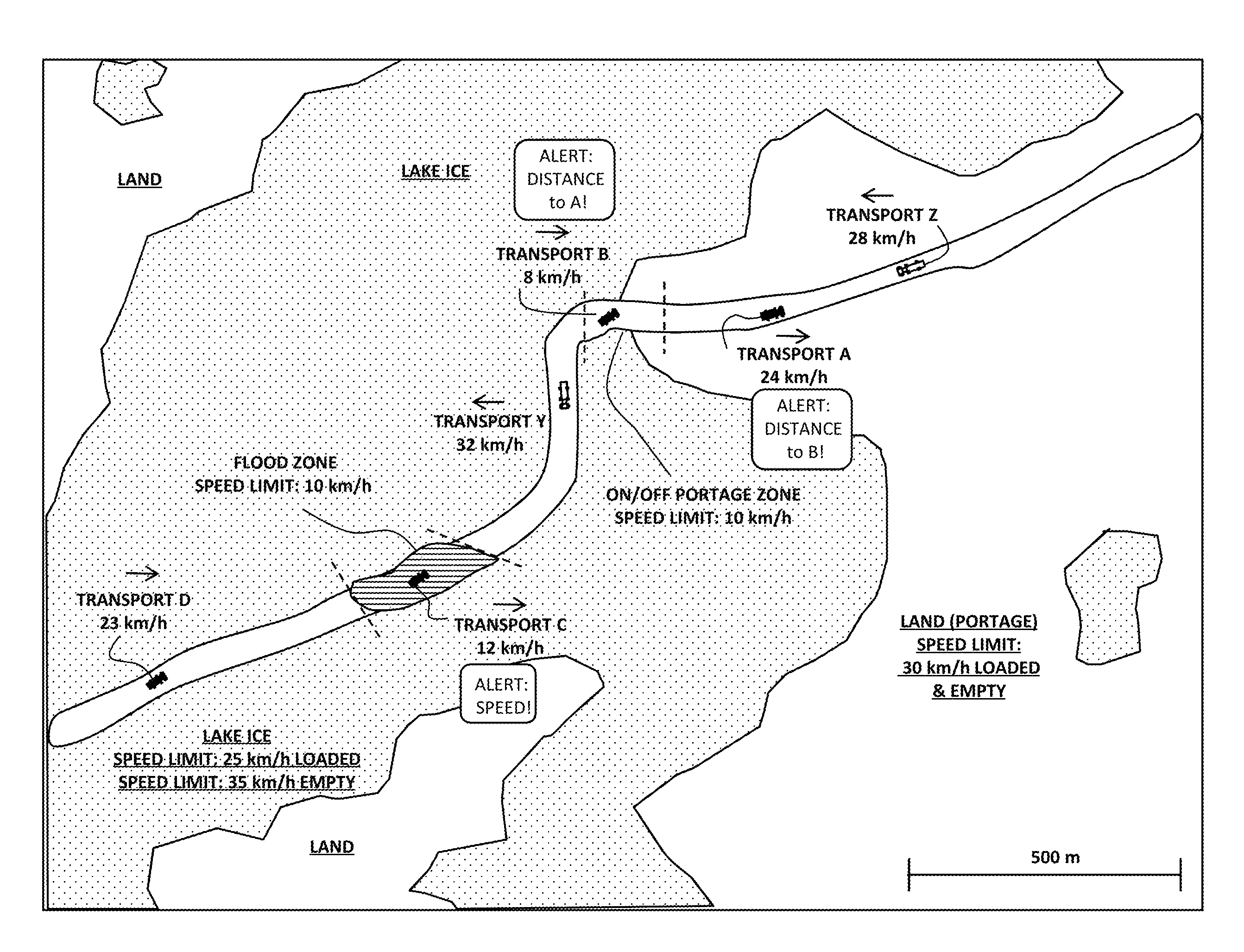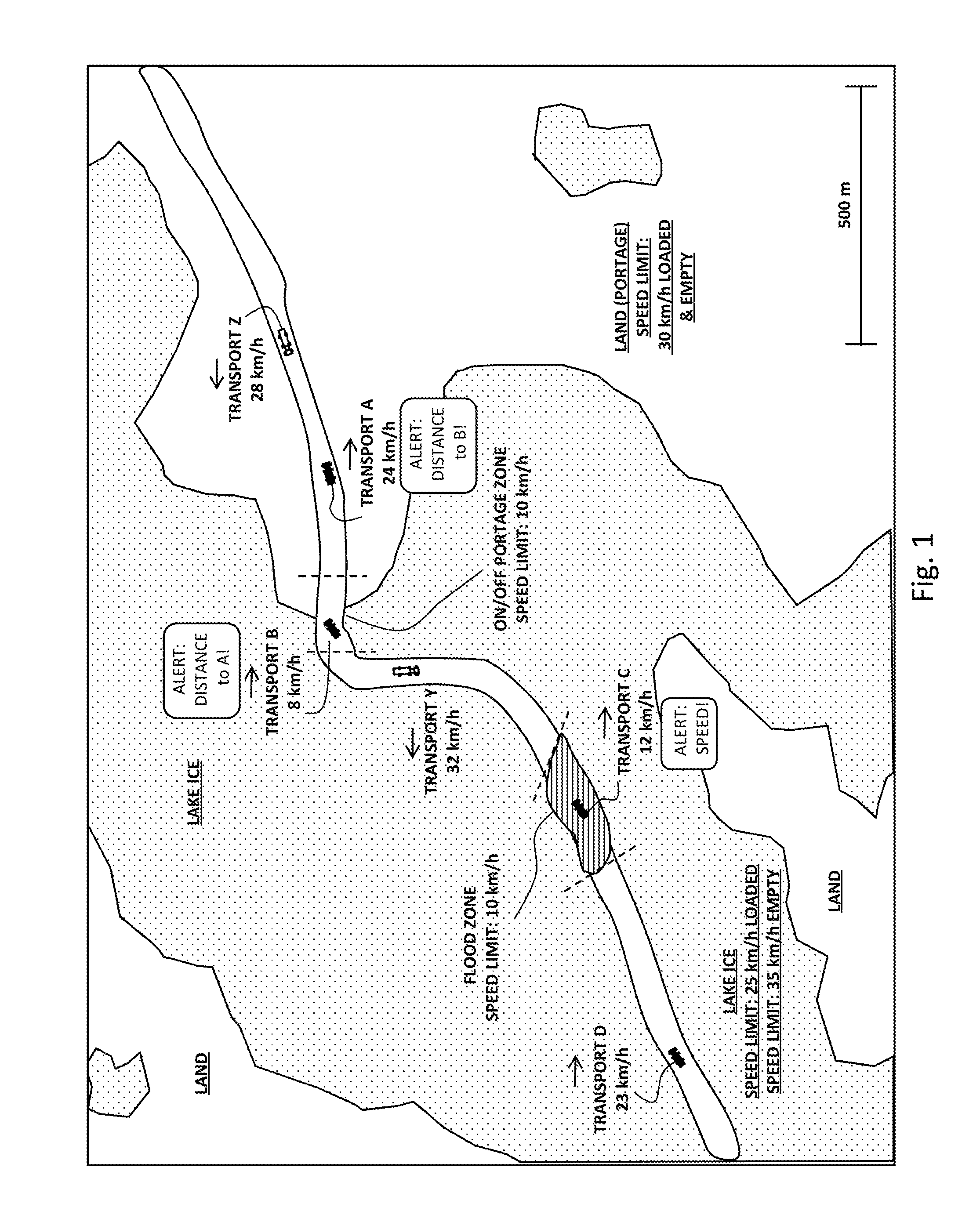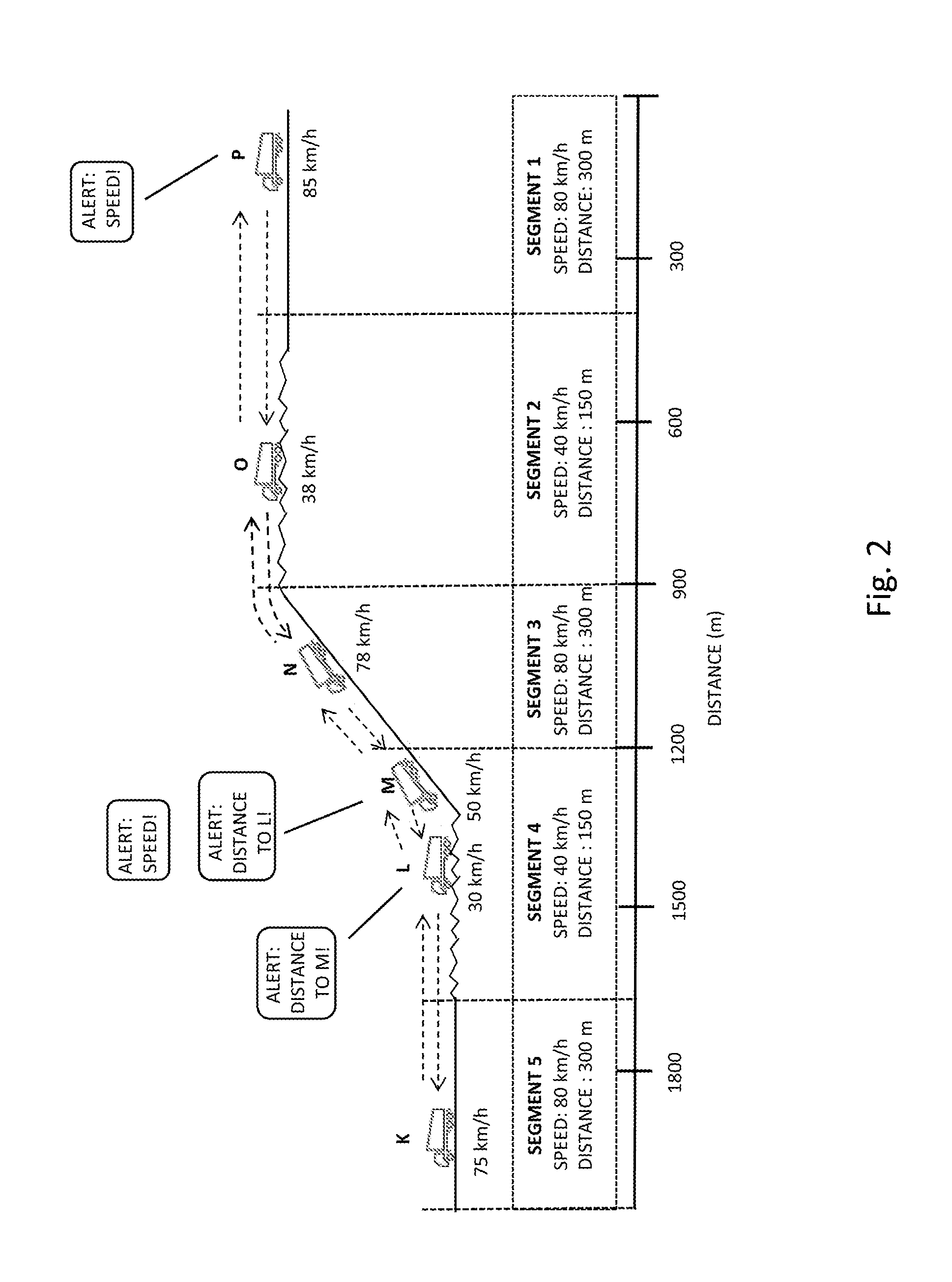Self-monitoring of vehicles in a convoy
a vehicle and convoy technology, applied in the field of vehicle control, can solve the problems of remote roadways traversing a number of hazards, inconvenient air freight, and lack of safety features on the roads used for accessing such locations
- Summary
- Abstract
- Description
- Claims
- Application Information
AI Technical Summary
Benefits of technology
Problems solved by technology
Method used
Image
Examples
example 1
Self-Monitoring of Transport Vehicles on an Ice Road Route
[0068]This example illustrates how the self-monitoring process operates for transport vehicles in a convoy on an ice road route. The section of the route shown in FIG. 1 has five different segments with differing speed limits as indicated in Table 2 below.
TABLE 2Ice Road Route Speed and Distance LimitsSpeedDistanceDescription of Roadway Segment andLimitLimit (m)Transport Condition(km / h)(min / max)Lake Surface: Loaded Vehicle25500 / 1000Lake Surface: Empty Vehicle35500 / 1000Portage: Loaded or Empty Vehicle30500 / 1000Flood Zone on Lake10500 / 1000On / Off Portage Zone10500 / 1000
[0069]A first convoy with four vehicles shown (Transports A to D) is moving on the roadway from left to right and a second convoy with two vehicles shown (Transports Y and Z) is moving from right to left. The first convoy includes loaded transports and the second convoy includes empty transports.
[0070]Transport A is traveling on a portage zone at a speed of 24 km / h...
example 2
Self-Monitoring of Six Vehicles in a Convoy Traveling on Land
[0075]Although a number of features of the invention have been described in context of convoy vehicles traveling on an ice road, the invention may also be used for other convoy applications other than ice road transport. FIG. 2 is a diagram showing a fleet of six transport vehicles (Transports K to P) in a convoy which is spread out over five segments of a roadway on land with various topographical and surface features. The speed and distance considerations relate to potential dangers resulting from topography and surface conditions.
[0076]Segment 1, on the right side of FIG. 2 has a flat smooth surface and has been assigned a speed limit of 80 km / h and a spacing limit (distance) between vehicles of 300 m.
[0077]Segment 2, to the immediate left of Segment 1 has a flat rough surface and has been assigned a speed limit of 40 km / h and a spacing limit between vehicles of 150 m.
[0078]Segment 3, to the immediate left of Segment 2 ...
example 3
Operation of One Embodiment of the Network Device
[0087]One embodiment of a network device for receiving convoy data and providing alerts to a driver of a vehicle will now be described with reference to FIG. 3 where the flow of data into the network device 10 is shown with dashed-line arrows, the flow of data within the device is shown with solid arrows and the flow of data out of the device is shown with dot-dashed arrows. This embodiment will be described with reference to an example convoy wherein each vehicle of the convoy includes a substantially similar network device having substantially similar functional capabilities. The skilled person will recognize that in such a situation, there is no “master-slave” arrangement or no “control vehicle” directing the convoy. Alerts are issued to a given vehicle based on its own speed data as well as its position data and the position data of leading and trailing vehicles. If the given vehicle is the first vehicle of the convoy, it will rec...
PUM
 Login to View More
Login to View More Abstract
Description
Claims
Application Information
 Login to View More
Login to View More - R&D
- Intellectual Property
- Life Sciences
- Materials
- Tech Scout
- Unparalleled Data Quality
- Higher Quality Content
- 60% Fewer Hallucinations
Browse by: Latest US Patents, China's latest patents, Technical Efficacy Thesaurus, Application Domain, Technology Topic, Popular Technical Reports.
© 2025 PatSnap. All rights reserved.Legal|Privacy policy|Modern Slavery Act Transparency Statement|Sitemap|About US| Contact US: help@patsnap.com



